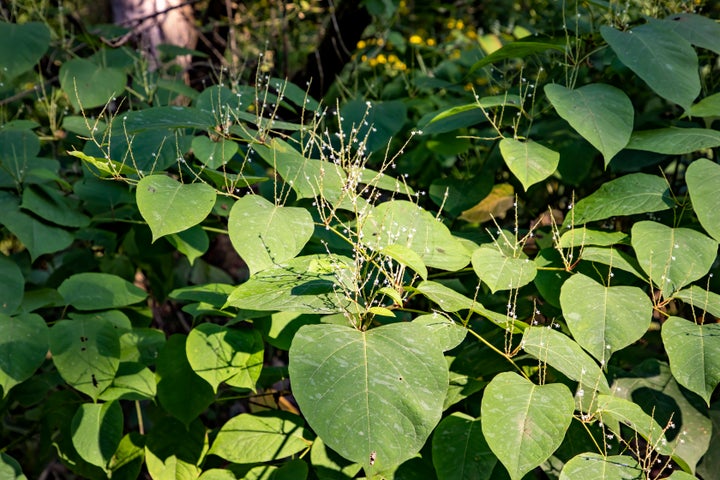
Anyone who’s so much as checked out a Rightmove listing will know that there are lots of things to keep an eye out when ensuring a property is as sound as possible.
Leaky gutters, poor construction materials, and busted plumbing are all notorious for affecting the safety of your home – but it turns out that a lesser-known issue takes the seemingly harmless form of a leafy plant.
Invasive species Japanese knotweed is enemy number one when it comes to foundation-ruining foliage, it seems.
Here’s how to spot the plant, what it can do to your home, and how to tackle it if you do notice its presence:
What does Japanese knotweed look like?
The plant has creamy white flowers, thick stems, and “shovel-shaped” leaves.
And when it first shoots out of the ground, the shoots take the form of almost bamboo-like canes.
It’s worth noting any long, thin stalks that seem to – well – shoot up in size, too, as the plant can grow by a terrifying 10cm a day under some conditions.
You might want to consider where you live when checking for the malicious plant too, as certain areas of the UK are more infested than others (with Halton being awarded the unfortunate title of Britain’s most knotweed-heavy area).
How does the plant affect homes?
Japanese knotweed can cause structural damage by pushing its way into slabs, bricks, and other weak parts of your home’s foundation.
This unsettles the building’s walls and floors, rendering the house less stable and secure.
The pesky plant is notoriously hard to kill, too, and can spread easily to neighbouring areas if left untreated.
What about property prices?
Unfortunately, the grim news continues – Japanese knotweed can end up costing homeowners a pretty penny.
Estate agents Yopa say that “knotweed can reduce a property’s value by between 5-15%, and depending on the size of the infestation and its proximity to surrounding buildings, it could even make a property unsellable”.
Thought the monetary misery was over? Of course knot (sorry). One homeowner successfully sued his neighbour for £4,900 when the invasive species spilled over from one garden to the next – so keeping the infestation contained is as much a smart financial choice as it is a philanthropic one.
So... what can I do if I spot the plant?
As we mentioned earlier, Japanese knotweed is a tough one to banish completely.
Cutting or pulling the plant won’t stop growth, as Japanese knotweed “can grow from a tiny fragment of root or rhizome in the soil”.
To treat the issue properly, you need to use chemical weed killers. And even then, the Royal Horticultural Society says that,“It usually takes at least three to four seasons to eradicate Japanese knotweed using weedkiller.
“Professional contractors, however, will have access to more powerful weedkiller that may reduce this period by half.”
Because Japanese knotweed is classed as ‘controlled waste’ under the Environmental Protection Act 1990, you can’t just bury or burn it after you’ve tackled the issue.
As Gov.uk says, “If you cannot dispose of Japanese knotweed suitably on site, you must send it to a landfill site or incineration facility that has the correct type of permit”.
You’ll also have to “use a registered waste carrier and an authorised landfill site or suitable disposal site.”
You must also “notify the Environment Agency at least one month before you bury knotweed” (it’ll have to be at least five metres deep), make sure you only burn knotweed on the site it came from, and check with your local council to make sure it’s permitted in the first place.
Lot of hassle for a harmless-looking plant, right?